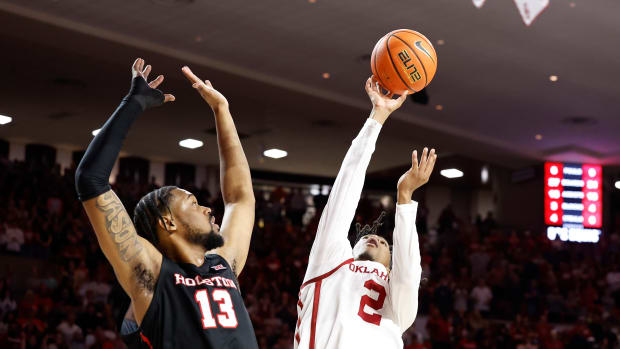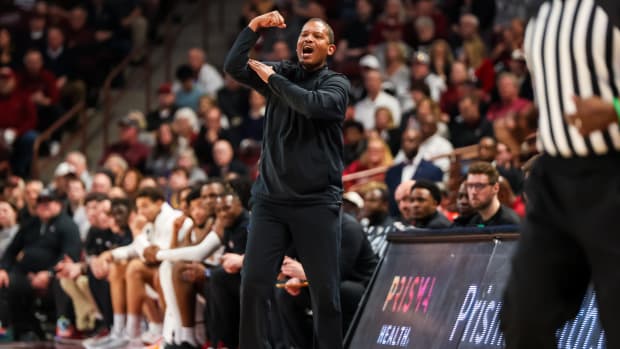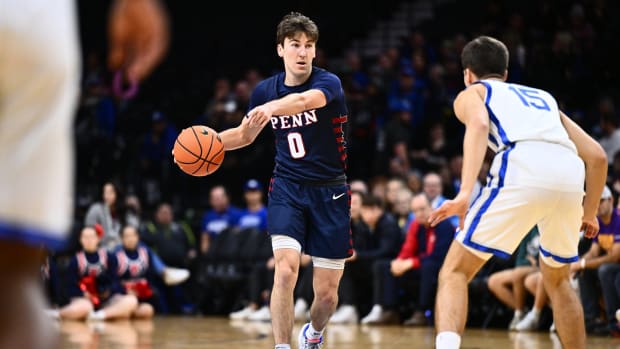First Round Shows There’s Plenty of Room for Madness in the Women’s Tournament
Princeton women’s basketball coach Carla Berube used her post-game press conference Saturday to push back on an old idea.
“People talk about how there isn’t any parity in women’s basketball… This is March Madness,” Berube said. “It’s awesome for mid-majors, because it’s great basketball. Yes, Power 5 conferences like the SEC, the Big Ten, they’re great teams… But you’re seeing it. Like, there is awesome basketball at the mid-majors, and I’m loving it."
Berube would know: Her No. 11 Princeton had just upset No. 6 Kentucky. And they weren’t alone. This March has featured six first-round wins by double-digit seeds on the women’s side—most of them from mid-majors. It’s a notable difference from the last two tournaments, each of which had just three such upsets, and a sign of gradual, steady movement toward more parity of the women’s game. Yes, No. 1 seeds like South Carolina and UConn still enjoyed huge blowouts this weekend. (South Carolina’s 79–21 win over Howard was the biggest ever in tournament history.) But a little further down the bracket, there’s more capacity for surprise here than there used to be, and that’s been on full display in the first round.
In addition to Princeton’s win, No. 12 Belmont kicked off No. 5 Oregon in a tense, back-and-forth affair that required double overtime. No. 10 South Dakota romped to a win over No. 7 Ole Miss. No. 11 Villanova edged out No. 6 BYU thanks to 25 points from Maddy Siegrist, who is second in the nation in scoring, and No. 10 Creighton never trailed in the second half in their victory over No. 7 Colorado. And perhaps the most thrilling game was one that wasn’t an upset after all: No. 14 Jackson State pushed No. 3 LSU to its limits, building a double-digit lead midway to the fourth quarter, only to see it slip through their fingers in the end. Had they pulled it off, they would have been one of the lowest seeds ever to advance to the second round.
For decades, the same few heavyweights were expected to be the only contenders year after year, and the complaint of such little parity was one of the most frequent knocks on the game. Those heavyweights have not moved much: The top women’s teams are still more dominant over their competition than the top men’s teams. But they look somewhat less dynastic than they once did—the last five championships have been won by five different teams—and the landscape around them is shifting. That’s especially true with the growing presence of mid-majors.
What do coaches think is behind the change?
“I think basketball is a lot more visible now than it was 10, 15 years ago on the women's side, and I think there's a lot of little girls that grow up seeing WNBA on TV, they see the NCAA Tournament, you can watch a lot of games now. I think that exposure has helped grow our game holistically,” said Belmont coach Bart Brooks. “And the more good players you have, the more chance you have to get a good player if you're recruiting at all levels… I think that’s helped with the parity.”
He also pointed out another factor specific to the last few years: Every game of the women’s tournament is now televised nationally, rather than regionally, as they were through 2019. The idea of every upset having the potential to be seen by everyone can be a big difference-maker.
“I'm really excited for us and the girls on the team that are younger than us so they know this is possible,” South Dakota center Hannah Sjerven said after the Coyotes’ win. “Just because we are a Summit League team or whatever else—we're ready to play.”
Another key point is that while all of these upsets beat the odds—hence, you know, the term “upset”—most of them did not feel totally surprising. There were clear reasons to believe in all of these teams.
Villanova has one of the game’s most dynamic scorers in Siegrist. Florida Gulf Coast is an analytics darling whose shot selection is right out of Daryl Morey’s dreams. (Yes, what they did in this win is totally par for the course for them: Not a single one of their 64 shot attempts on Friday was from mid-range. They shoot in the paint, from beyond the arc, or not at all.) Meanwhile, Princeton is one of the strongest defensive teams in the country: No Division I squad forced a worse assist-to-turnover ratio among its opponents. And Belmont has been here before: It was a 12-seed last year, too, when it upset No. 5 Gonzaga. Finally, South Dakota is known for its ability to hold onto the ball, with the second-lowest turnover rate in the nation. It’s this range of skill sets all across the field—not just concentrated in the top few teams—that have made upsets more frequent this year.
In other words? The game is beginning to change. This is the first year that the women have been able to market their tournament with the branding of “March Madness,” and they’re out to prove that, yes, there’s plenty of room for madness here.
“It’s March. Everybody knows seeding doesn’t matter,” said LSU guard Khayla Pointer, asked about the tough matchup she had just faced from Jackson State. “We have seen it on the men’s side. We see it on the women’s side. It is about who wants it the most and who is trying to extend their season.”





